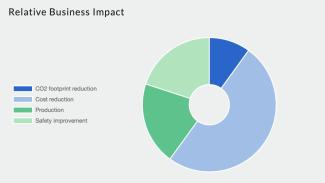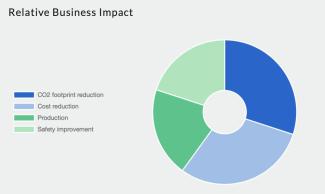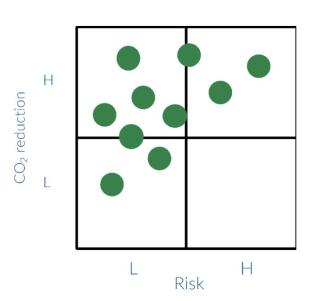
Large companies all over the globe are taking conscious effort to reduce the CO2 footprint of their activities. According to a report from Energy & Climate Intelligence Unit, over a fifth of the world’s 2,000 largest public companies announced net zero commitments. A good chunk of this number stated they have interim targets, a published plan and a reporting system as initial actions toward this commitment. For most companies, targets are usually set at the Board level, and from there distributed across the company such that each and every part of the company contributes. And the Energy industry is not different.
But then the question comes: how to realise those targets?
One quick conclusion we can make is that technology is required to make the step change; conducting business the way you have always done is not good enough. However, this is easier said than done. Finding the right technology for your business can be a challenge! It is no longer enough to find a technology that fits your business needs. There is now a conscious effort to also take into account the technology’s carbon emission levels.
Assessing technologies through the CO2 reduction lens
There are two logical ways technologies play a key role in the global net zero goal of private organisations. First, companies can integrate energy efficiency and renewable energy technologies in their generation and use of energy in their operations. And second, companies can replace existing technologies they use in their operations with ones that will have lower or no carbon footprint.
Selecting technologies that will reduce your operation’s greenhouse gas emission requires more than looking at the product brochures or searching the internet. These technologies could either be complementary solutions to be integrated in your current portfolio, or new ones to replace carbon emitting technologies you currently use.
We are looking at day-to-day technologies such as higher efficiency equipment that require less power, or asset management software that better track operational efficiency to streamline activities, or electrifying fuel-powered machines and vehicles.
In finding these technologies, there is a need for further examination of their impact on carbon reduction and juxtaposing it with other top considerations of companies (i.e. costs, safety, productivity).
And that’s where TechnologyCatalogue.com comes in, a platform partner to realise companies’ CO2 reduction together with other key business goals.
Selecting the right tech through TechnologyCatalogue.com
TechnologyCatalogue.com is home to over 700 registered technologies, and our aim is to grow to over 10,000 within the next couple of years. Visited by ~2,000 unique users every week, the platform hosts novel and proven technologies for the energy industry, including those that delivered concrete results in other industries.
The information that the suppliers provide on our tech pages help to assess whether a technology is potentially of interest to you. Deployment references and reviews from users or independent experts are also available to further aid the selection process. If something has worked for others, it can also be a suitable tech for your business!
And one of the key information we ask from suppliers when they register a technology is the relative business impact of their technology. They are required to distribute 10 points across four (4) areas: CO2 footprint reduction, cost reduction, production and safety. Later on in the process, further granularity is needed. But this impact indication helps with the initial screening.

Asset Voice
Let’s take an example: AssetVoice, an automated and real-time asset tracking technology supplied by Add Energy. This solution helps to streamline the activities. As a result of the efficiency improvements, costs are cut. And with less movements, CO2 emissions are reduced.

EnergyPod
Let’s take another example: EnergyPod, a clean alternative to diesel gensets, supplied by Amphibious Energy. The EnergyPod is a compact wind and solar-driven electrical generator that is durable, safe, cost-effective, and environmentally friendly. This solution clearly helps to reduce the CO2 footprint, and at the same time has a positive impact on other KPIs such that the introduction of the tech delivers an attractive financial return.
Building a tech portfolio to reduce CO2 footprint
The moment a first selection is made, further assessment is required. The financial impact of technologies is thereby important, but this needs to be balanced against the technical and non-technical risks.
We can support you with making the right decisions by providing specific data insights as well as the tools to make the selection, based on our extensive experience with technology deployment. Over the years, we have facilitated more than 1,000 technology deployments for global and regional operators resulting in >$1 billion of value added.

Conclusion
The corporate world is changing fast. Companies are no longer just concerned about costs and productivity, but also on how their businesses are affecting the environment. And climate pledges necessitate concrete actions to realise net zero goals without sacrificing business interests. And this is where technology and innovation plays a crucial role. A large number of technologies are available today to reduce your CO2 footprint, while still realising a positive impact on other KPIs such as cost and safety.
With TechnologyCatalogue.com, we can help you find and deploy technologies that address all these concerns. Together, we can create a balanced portfolio with solid financial returns using data insights and tools we built over years of first-hand experience in the industry.
Curious how this can help you? Please contact us at info@technologycatalogue.com!
